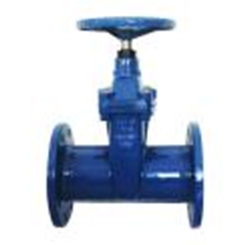Aug . 28, 2024 04:00 Back to list
Low Pressure Check Valve - Reliable Flow Control Solutions
Understanding Low Pressure Check Valves A Key Component in Fluid Systems
Low pressure check valves play a crucial role in various fluid systems by ensuring the efficient and safe flow of liquids and gases. These valves are designed to allow fluid to flow in one direction while preventing backflow, which can lead to system inefficiencies and potential damage. Understanding their functionality, applications, and maintenance is essential for anyone working in industries reliant on fluid dynamics.
Functionality of Low Pressure Check Valves
The primary purpose of a low pressure check valve is to maintain unidirectional flow. They operate based on the pressure difference across the valve’s seat. When the fluid flows from the inlet to the outlet, the pressure pushes the valve disc or ball off its seat, allowing flow. Conversely, when the flow tries to reverse, the back pressure forces the valve closure mechanism to seal, thereby preventing backflow. This function is critical in preventing the mixing of fluids and maintaining system integrity.
Applications in Various Industries
low pressure check valve

Low pressure check valves are widely used across several industries, including water treatment, HVAC systems, food and beverage processing, and chemical manufacturing. In water treatment plants, for example, these valves prevent contaminants from re-entering the clean water supply. In HVAC systems, they maintain proper airflow and ensure the efficiency of heating and cooling systems. In the food and beverage industry, the hygiene and safety of the products are paramount, making low pressure check valves essential for preventing backflow that could compromise food safety standards.
Maintenance and Best Practices
Regular maintenance of low pressure check valves is vital for optimal performance. Inspection should be performed periodically to check for signs of wear, corrosion, or buildup of debris that may impede the valve's operation. Operators should ensure that the valve is installed correctly, following manufacturer guidelines regarding orientation and positioning. It is also essential to monitor the system for fluctuations in pressure that could indicate valve malfunction or need for replacement.
Conclusion
In conclusion, low pressure check valves are integral to the efficient operation of fluid systems across various sectors. Their ability to prevent backflow while allowing forward flow enhances the reliability of systems, protects equipment, and contributes to safety and efficiency. Proper understanding and maintenance of these valves ensure longevity and optimal performance, making them a vital component in modern industrial applications.
Share
-
Reliable Wafer Type Butterfly Valves for Every IndustryNewsJul.25,2025
-
Reliable Flow Control Begins with the Right Ball Check ValveNewsJul.25,2025
-
Precision Flow Control Starts with Quality ValvesNewsJul.25,2025
-
Industrial Flow Control ReliabilityNewsJul.25,2025
-
Engineered for Efficiency Gate Valves That Power Industrial PerformanceNewsJul.25,2025
-
Empowering Infrastructure Through Quality ManufacturingNewsJul.25,2025